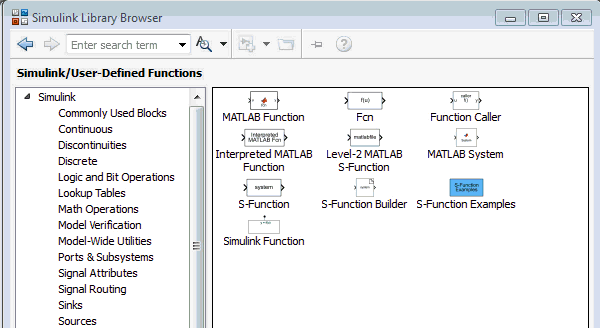

MdlZeroCrossing to compute the outputs S-Function Callback MethodsĪn S-function comprises a set of S-function callback You can modify minor step methods such as
#FUNCTION MATLAB UPDATE#
Update of Continuous States and Time - Takes place only if the model hasĬontinuous states. After this stage, blocks go through a simulation Parameters are evaluated, block execution order is determined, and memory forĮach operation is allocated. Model Initialization - Model is prepared for simulation. Simulation loop then continues until the simulation is complete. For each block, the engine invokes functions that compute theīlock states, derivatives, and outputs for the current sample time. Step, the engine executes each block in the model in the order determined during The engine then enters a simulation loop, where each pass through the loop is Signal widths, data types, and sample times, evaluates block parameters,ĭetermines block execution order, and allocates memory. Initialization phase, the Simulink engine incorporates library blocks into the model, propagates Simulation StagesĮxecution of a Simulink model proceeds in stages. Y = f 0 ( t, x, u ) (Outputs) x ˙ = f d ( t, x, u ) (Derivatives) x d k + 1 = f u ( t, x c, x d k, u ), (Update)

Simulation time, the inputs, parameters, and the states. Parameters, and a set of outputs, where the outputs are a function of the Mathematics of Simulink BlocksĪ Simulink block consists of a set of inputs, a set of states, a set of See Simulation Phases in Dynamic Systems for moreĭetailed information. To understand how S-functions work,įirst you need to understand the mathematics of how Simulink simulates a model, namely the stages of simulation. S-function basics require fundamental knowledge of mathematical relationshipsīetween the block inputs, states, and outputs. Simulation, a method is invoked by the simulation engine to fulfill a specific task. Initialization, update, derivatives, outputs and termination. S-functions define how a block works during different parts of simulation, such as
#FUNCTION MATLAB CODE#
For more information, see S-Functions and Code Generation (Simulink Coder). You can alsoĬustomize the code generated for S-functions by writing a Target Language Compiler (TLC)įile. User interface using masking (see Create Block Masks).Ĭoder™, you can use S-functions in a model and generate code.

After you write your S-function and place its name in an S-Functionīlock (available in the User-Defined Functions block library), you can customize the S-function and use the S-Function block to add it to a Simulink model. By following a set of simple rules, you can implement an algorithm in an S-functions follow a general form and can accommodate continuous, discrete, and hybrid Place between the engine and built-in Simulink blocks. This interaction is very similar to the interaction that takes S-functions use a special calling syntax called the S-function API that enables you to As with other MEXįiles, S-functions are dynamically linked subroutines that the MATLAB execution engine can automatically load and execute. C, C++, and Fortran S-functions are compiled as MEX files using the S-function is a computer language description of a Simulink block written in MATLAB ®, C, C++, See the page for Template:Q for details and examples.S-functions (system-functions) provide a powerful mechanism for extending theĬapabilities of the Simulink ® environment. Edit the page, then scroll to the bottom and add a question by putting in the characters * will automatically put the page in the category of pages with questions - other editors hoping to help out can then go to that category page to see where the questions are. Post your questions by editing the discussion page of this article. While functions are called by their filename, subfunctions are called by the FNAME in the subfunction header. Subfunctions cannot be seen by the workspace and may only be accessed by the function and subfunctions included in the file. Functions can have subfunctions defined with in them.See SCRIPT for procedures that work globally on the work. Within the body of the function are all local variables. For example, the existence of a fileĭefines a new function called STAT that calculates the The file must be a line that contains the syntax definitionįor the new function. TheĬommands and functions that comprise the new function mustīe put in a file whose name defines the name of the newįunction, with a filename extension of '.m'. New functions may be added to MATLAB's vocabulary if theyĪre expressed in terms of other existing functions.


 0 kommentar(er)
0 kommentar(er)
